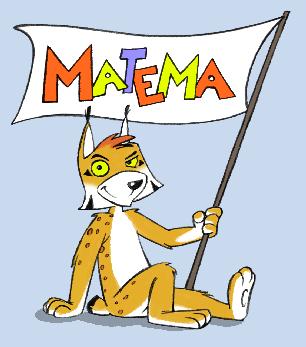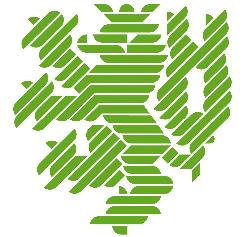Matthias Ehrhardt
Mathematische Modelierung von sozialen Unruhen und Revolutionen
Simulationen in Sozialwissenschaften
|
 |
Materialien für Interessierte zum Vortrag am
Die Zielgruppe sind Schüler ab der 11. Klasse.
|
 |
|

Das MATEMA-Logo (ein Luchs, copyright by Ulf Grenzer)
Beschreibung
Wir wollen in diesem Vortrag zeigen, inwieweit man mit sog. Agenten-basierten Modellen bzw. mikroskopischen Modellen
in der Lage ist, soziale Unruhen oder auch Rebellionen zu modelieren.
Wir gehen dabei vom klassischen Model von Epstein (2002) aus und verfeinern es schrittweise.
Der aktuelle Hintergrund sind die Unruhen in mehreren Städten in Großbritannien und auch
der sog. Arabische Frühling in 2011. Mithilfe von Agenten-basierten Modellen
(z.B. 'Rebellion' in Netlogo) kann man verschiedene Polizeitaktiken oder auch die Auswirkungen
einer Zensur von sozialen Medien, wie etwas Facebook, simulieren.
Es zeigt sich, dass der völlige Verzicht auf jedwede Zensur zu maximalen Friedenszeit-Intervallen führt,
siehe (Casilli & Tubaro, 2011).

Das MATEMA-Logo (ein Luchs, copyright by Ulf Grenzer)
Referenzen für den Vortrag
- F. Amblard, A. Geller, M. Neumann, A. Srbljinovic, N. Wijermans,
Analyzing social conflict via computational social simulation: A review of approaches. In
K. Martinás, D. Matika, A. Srbljinovic (eds.),
Complex Societal Dynamics - Security Challenges and Opportunities., IOS Press, Amsterdam, 2010 Seiten 126-141.
- A.A. Casilli, P. Tubaro,
Is a social media-fuelled uprising the worst case scenario?
elements for a sociology of uk riots,
Joint post of Bodyspacesociety / Paola Tubaro's Blog, 11 August 2011.
- A.A. Casilli, P. Tubaro
Why net censorship in times of political unrest
results in more violent uprisings: A social
simulation experiment on the UK riots,
Working paper, August 2011.
- J. DeNardo,
Power in Numbers: The Political Strategy of Protest and Rebellion,
Princeton Univ. Press, Princeton, 1985.
- J.M. Epstein,
Modeling civil violence: An agent-based computational approach,
Proceedings of the National Academy of Sciences of the United States of America 99 (2002),
7243-7250.
- J. Epstein,
Generative Social Science: Studies in Agent-Based Computational Modeling,
Princeton Univ. Press, Princeton, 2003.
- C. Fuchs,
Social media and the uk riots: Twitter mobs, facebook mobs, blackberry
mobs and the structural violence of neoliberalism,
Information - Society - Technology and Media, Blog, 10 August 2011.
- M. Garlick, M. Chli,
The effect of social influence and curfews on civil violence,
In: Proceedings of AAMAS'09 - the 8th International Conference on Autonomous Agents
and Multiagent Systems, Budapest, Ungarn, Band 2, Seiten 1335-1336.
- J.-W. Kim, R.A. Hanneman,
A Computational Model of Worker Protest
Journal of Artificial Societies and Social Simulation 14 (2011).
- B. Klemens, J.M. Epstein, R.A. Hammond, M.A. Raifman,
Empirical performance of a decentralized civil violence model,
The Brookings Institution, 2010.
- M.E.H. Pedersen,
Civil Violence - A Computational Model,
Daimi, University of Aarhus, June 2004.
- P. Tubaro, A.A. Casilli.
An ethnographic seduction: How qualitative research and
agent-based models can benefit each other.
Bulletin de Méthodologie Sociologique 106 (2010), 59-74.
- R.K. Udeshi,
Multi-agent Modeling of Civil Disobedience and Violence,
Computer Systems Research, 2005-2006.
Software zum Vortrag
- U. Wilensky,
Netlogo rebellion model, Netlogo Model Library,
2004.
ABM Software:
- Ascape
- Flame
- Mason
- NetLogo
- Repast
- SeSAm
- Swarm
- Vensim PLE





